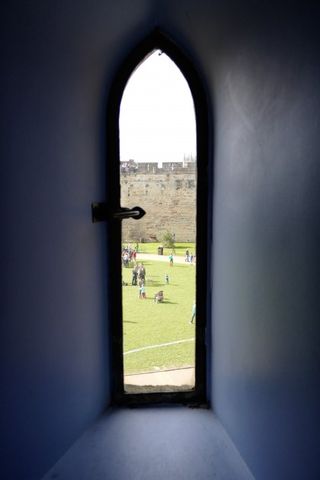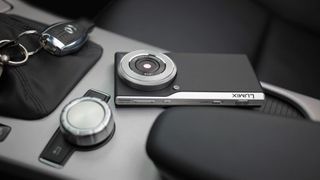Why you can trust TechRadar
Although images taken at ISO 1600 and higher can look rather smoothed over and 'painterly' at 100% on-screen, the results from the CM1 generally look very good at normal viewing and sharing sizes. Lower sensitivity images have a good level of detail and sharpness. Unlike with some camera phones, the in-camera sharpening system also works sympathetically, not making edges look harsh or introducing halos.

Click here for a full size version.

Click here for a full size version.
The camera's Multi metering system does a good job with exposure and there were only a few occasions during this test when I needed to use the exposure compensation control.
As well as enabling a good level of detail and decent noise control, having a 1-inch sensor gives the CM1 good dynamic range. This means that images have a wide range of tones (for a compact camera) and highlights don't burn out too easily, nor do shadows turn deep black too quickly.

Click here for a full size version.

Click here for a full size version.
While the CM1 offers a collection of white balance settings, including manual (called 'White set'), the automatic option is likely to be the most commonly used and it works very well in most lighting conditions, producing natural looking images. Shots taken in heavily shaded conditions can look a little cool, but not excessively so and this can be easily corrected using an app or on a computer. Those who shoot raw files and use Adobe Photoshop have the full gamut of Adobe Camera Raw adjustments available to them.
In bright light the CM1's autofocus system is fast, but there's often a little backwards and forwards adjustment. It doesn't seem quite as smooth as an iPhone 5S's AF adjustment, but then it is moving larger lens elements. In most situations it gets the subject sharp, but there are times when it would be nice to have a smaller AF point so that finer details can be targeted.
Click here for a full size version.
We like
Many photographers have a hierarchy of cameras with an SLR or compact system camera sitting at the top, a compact camera in the middle and a phone at the bottom. While the CM1 would never replace an SLR or CSC, it doesn't feel like a step down from a compact camera. In fact, it has a larger sensor than many compact cameras, making it a step up in some cases. It also allows much more control over settings than many compacts and phones, plus there are lots of apps available to add extra features. It's very easy to share images, too.
We dislike
Reflections are always a problem on a screen in very bright light, but the CM1's screen suffers a tiny bit more than the screen on a iPhone 5S, which makes composing images tricky. The camera also takes a little longer to process shots, which while not a major drama, seems a little behind the times.
My only other concern with the CM1 is that the lens is rather exposed and I worry that it could be scratched fairly easily if carried in a bag along with keys and the usual paraphernalia of life.
Verdict
The Panasonic CM1 offers a level of control that few camera phones afford. For a start there's the full gamut of exposure control modes including aperture priority, shutter priority and manual as well a collection of automatic options. It's also possible to record raw as well as JPEG files. Further good news is that the control is handed to you via an intuitive interface with a responsive touchscreen, a few physical buttons and a lens ring.

The key selling point, however, is that having a larger sensor than other 'phones and many compact cameras enables the CM1 to produce high quality images in a wider range of conditions than most phones.

